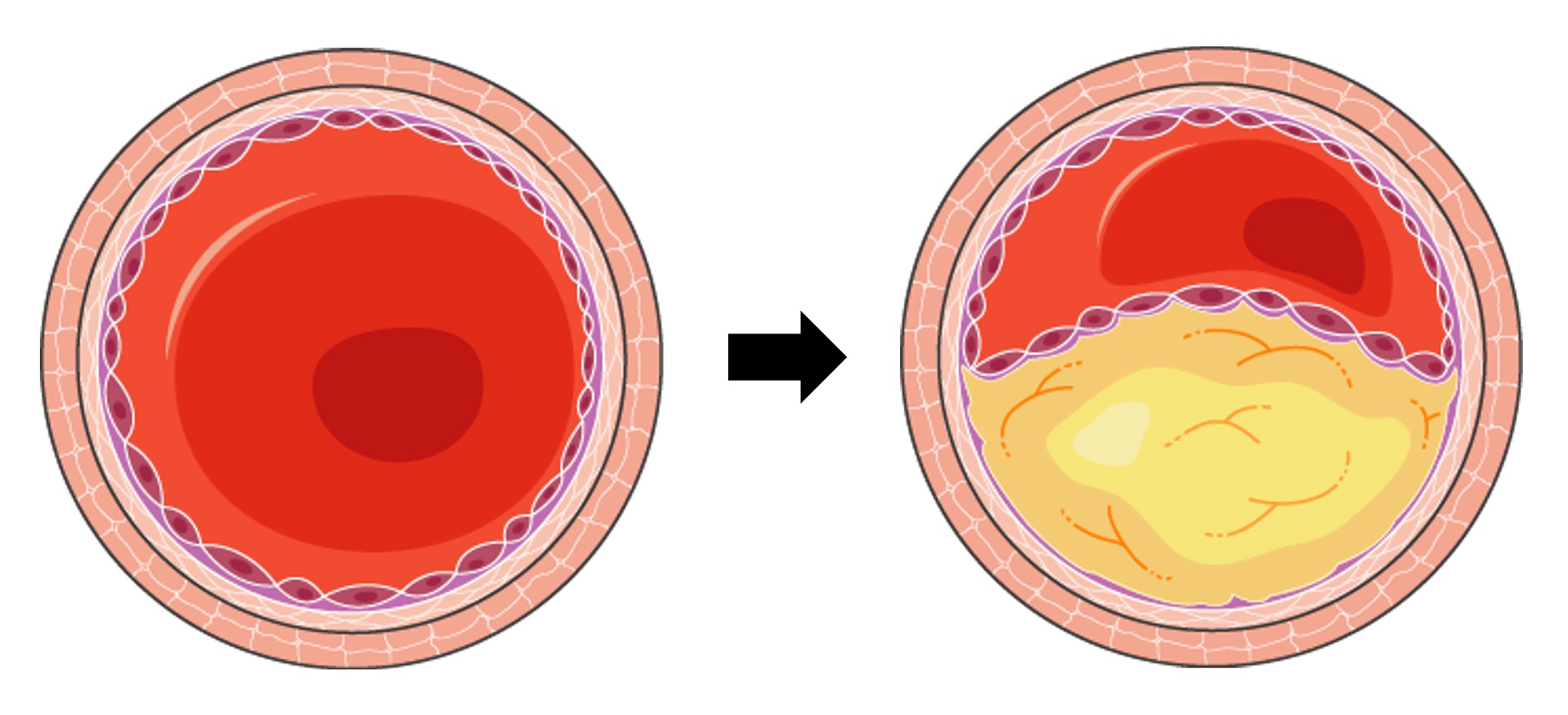

Thrombosis
Blood pumped through the heart is at high pressure and cannot be used to supply the heart muscle with oxygen and nutrients
-
Coronary arteries are the blood vessels that surround the heart and nourish the cardiac tissue to keep the heart working
-
If coronary arteries become occluded, the region of heart tissue nourished by the blocked artery will die and cease to function
Causes of Coronary Occlusion
Atherosclerosis is the hardening and narrowing of the arteries due to the deposition of cholesterol
-
Atheromas (fatty deposits) develop in the arteries and significantly reduce the diameter of the vessel lumen
-
The restricted blood flow increases pressure in the artery, leading to damage to the arterial wall (from shear stress)
-
The damaged region is repaired with fibrous tissue which significantly reduces the elasticity of the vessel wall
-
As the smooth lining of the artery is progressively degraded, lesions form called atherosclerotic plaques
-
If the plaque ruptures, blood clotting is triggered, forming a thrombus that restricts blood flow
-
If the thrombus is dislodged it becomes an embolus and can cause a blockage in a smaller arteriole
Atherosclerotic Plaque



Consequences of Occlusion
Atherosclerosis can lead to blood clots which cause coronary heart disease when they occur in coronary arteries
-
Myocardial tissue requires the oxygen and nutrients transported via the coronary arteries in order to function
If blood flow is impaired, then the heart tissue supplied by the impacted coronary artery will begin to die
If a coronary artery becomes completely blocked, an acute myocardial infarction (heart attack) will result
-
Blockages of coronary arteries are typically treated by by-pass surgery or creating a stent (e.g. balloon angioplasty)
Coronary Thrombosis






